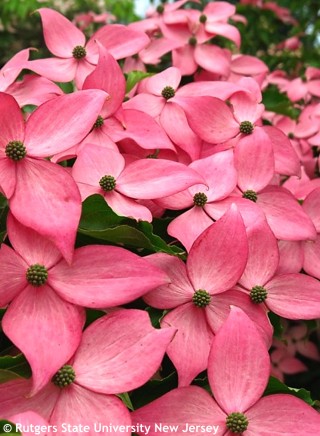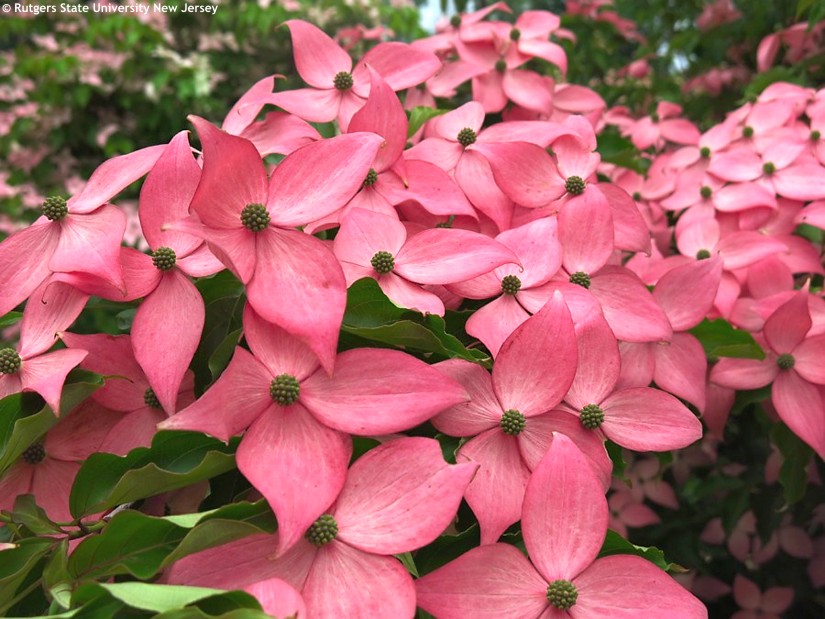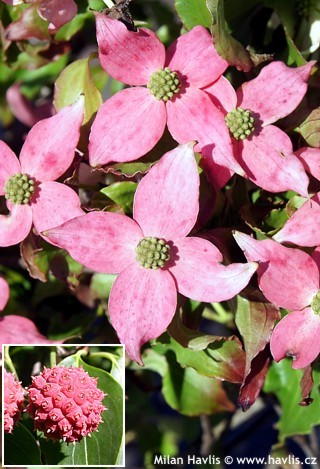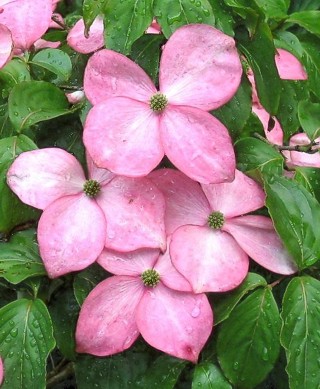Cornus kousa 'Rutpink' SCARLET FIRE® Japanese dogwood
size/type
taller shrub,taller shrub
usual height
3-4m
usual width
2-3m
leaves
deciduous broadleaf
colour of leaves
flowers
showy
colour of flowers
blooming time
May-June
location
full sun
soil type
acidic (peaty)
soil moisture requirements
evenly moist (dislikes drought)
USDA zone (lowest)
5 (down to -29°C)
winter protection
for zone 5+6

for zone 7

categorized
Cornus
Following Dr.Elwin Orton's success with Stellar Pink® disease-resistant hybrid dogwood with pale pink flowers from 1988, his student Thomas Molnar of Rutgers State University in New Jersey continues with his work after Orton's retirement in 2008, and breeds a richer pink flowering plant that is discovered among numerous trial plants in Rutger's horticultural farm in New Brunswick in spring of 2012. It was patented as Rutpink in 2015, PP28311, and marketed as SCARLET FIRE®. First plants were in garden centres since 2017.Description of the plant:
SCARLET FIRE® is a proper Japanese dogwood, not a hybrid, so a plant which flowers later than American dogwoods, on already leafed-out trees (shrubs). The flowers are in fact bracts. There are 4, rich magenta pink, oval, sharply pointed bracts, composed around a small flower head, about 13 cm across. It is very floriferous once it reaches good flowering age. It blooms from late May until June.Pointed leaves are deciduous, ovate, drooping like pear tree leaves, dark green with burgundy hues when young, and making the same impressive display of autumn colours – vivid red to bright burgundy - as other dogwoods.
SCARLET FIRE® dogwood grows upright and bushy into a large shrub or a small tree if bottom branches are removed. Pruning is not needed. But if you want to shape it or reduce its size do so as soon as possible after flowering so it can set buds for the following year. It is resistant to diseases and borers.
It will look its best when planted as a free-standing specimen. Its numerous, divine flowers will then have the undivided attention in late spring and you will be able to enjoy the structure of a densely leaved plant until autumn. If however your aim is to have it in a group, consider the companions carefully. We suggest combining it with compact or dwarf, or even ground-covering plants only, so that each plant has its attention. Yakushimanum rhododendrons, dwarf conifers, and/or evergreen groundcovers could do the job.
Every dogwood likes acidic soil, rich in organic material, and always moist. Some gardeners advise planting it in semi-shade to reduce summer sunlight but we do not recommend that. Plant it in full sun and mulch the roots well. In dry spells provide extra watering and thus you can be sure your dogwood will flower profusely and will be richer and healthier. Use of selective fertilizers supporting flowering and leaf colour is advised. Fully hardy to about -29°C (USDA zone 5).
Last update 24-01-2018
QUICK PRICE OVERVIEW
CURRENTLY SOLD OUT



















